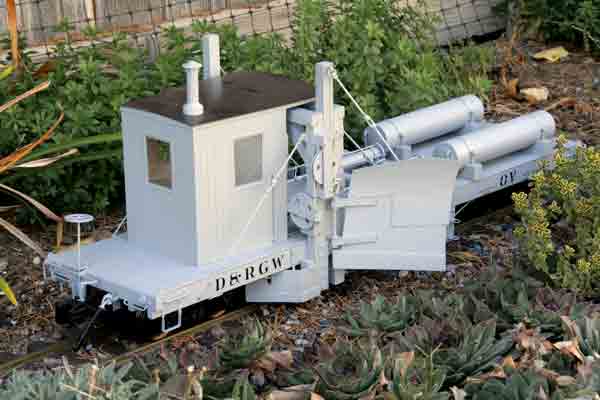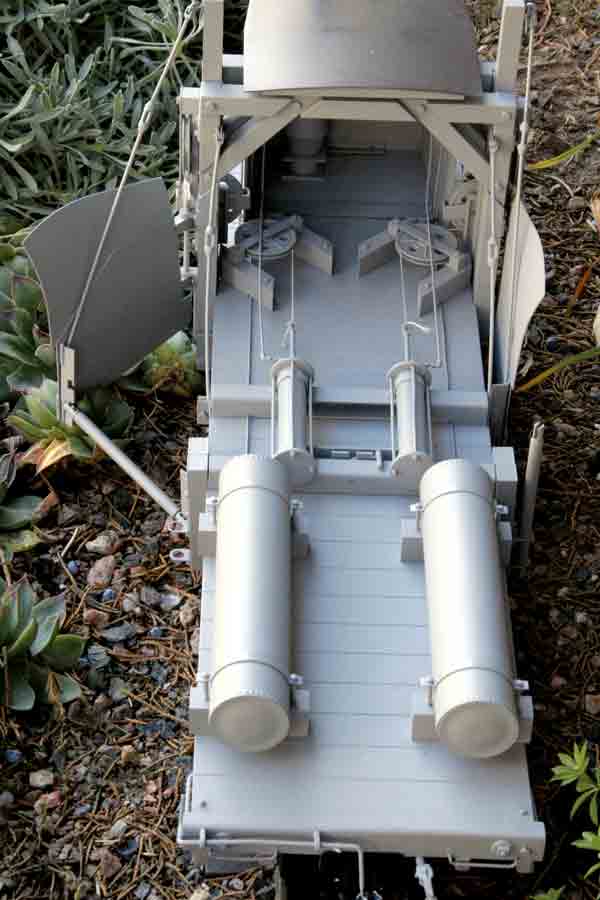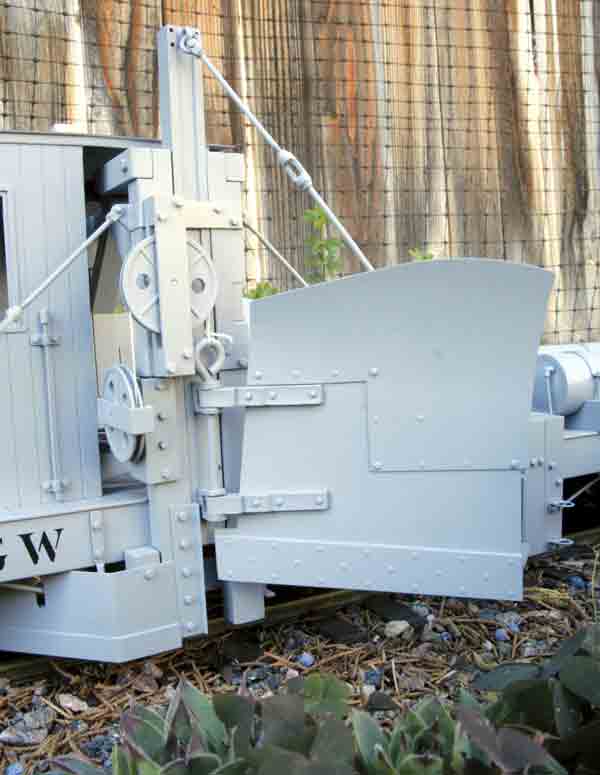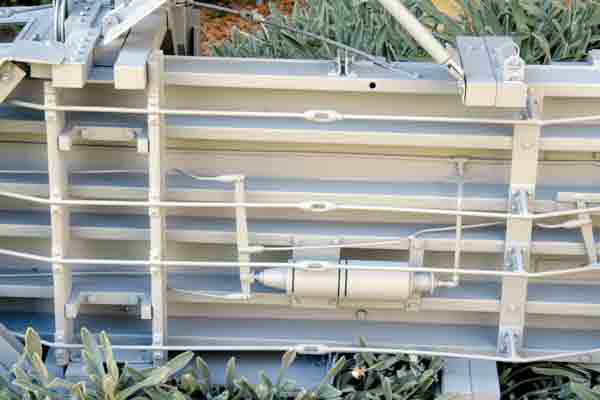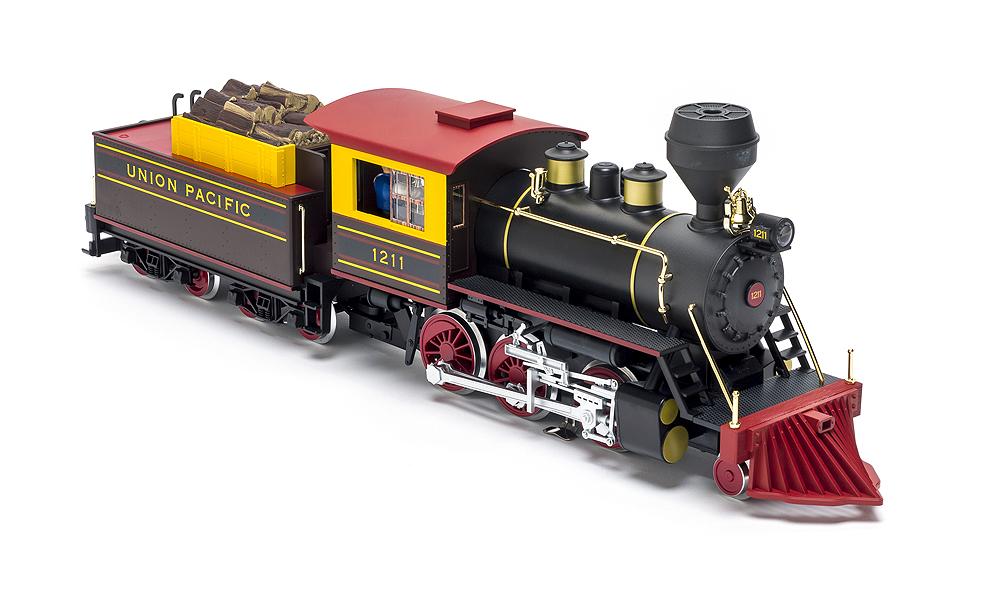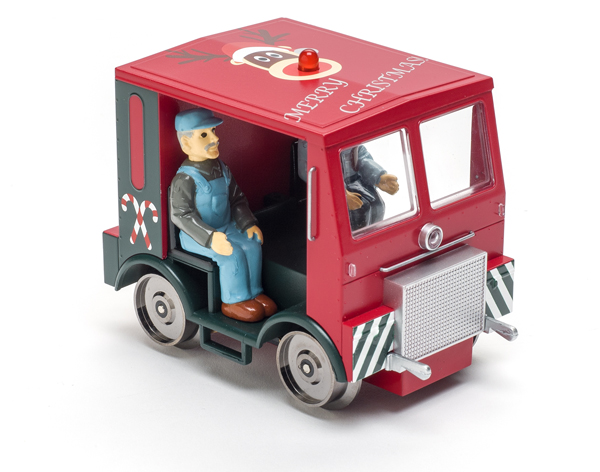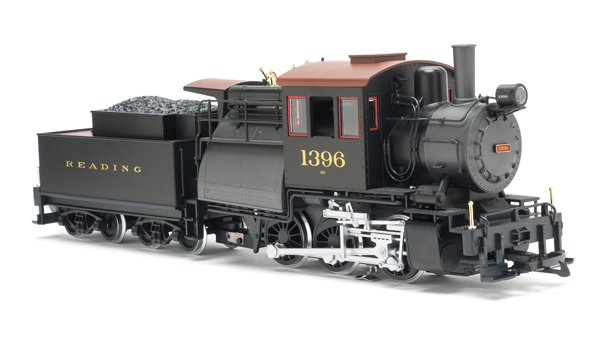1:20.3 scale, gauge-1 D&RGW Spreader OV
Accucraft Trains
33268 Central Ave.
Union City CA 94587
Price: $1,000
Web site: www.accucraft.com
All-metal model of a D&RGW ballast spreader; working knuckle couplers; appropriate moving parts; two versions available. Dimensions: Length, 17″ over end beams; width, 6″ (wings folded) or 10¼” (wings extended); height, 7¾”. In 1:20.3 scale, this works out to 28’9″ x 10’2″ or 17’4″ x 13’1″, respectively. Minimum radius: 4′
Pros: Matches prototype dimensions; crisp lettering; well detailed; operable wing mechanism
Cons: Piping for air cylinder and control incompletely modeled; trucks could benefit from being more free-rolling, given the weight of the car
Spreader OV had a wedge-shaped blade that hung beneath the car that spread the ballast between the rails. Then two larger wings spread the ballast along the side of the track. These wings could be raised and lowered via two large air cylinders, one for each wing. The wings were held open by two rigid poles placed between the ends of the wings and the frame of the car.
OV’s service as a ballast spreader was short-lived. Once its sister, OU, arrived from O.F. Jordan, OV was relegated to snow duty. When used in this capacity, the car typically ran with one of the D&RGW’s flanger cars ahead of it. (Photos show a locomotive, the flanger, another locomotive, then the spreader, followed by a caboose.)
The car went through some changes over its life. The original small, adjustable flanger blades under the car were replaced by a larger wedge plow, which was apparently fixed in position. According to the same reference, the large air cylinders that moved the wings, originally took their air from the same train line as the brakes. This caused problems during operations, as the wings could not be adjusted with the train moving, lest the sudden drop in air pressure trigger the brakes on the train. A second air line was added, and locomotives assigned to work duty were fitted with an extra air hose just to power the work equipment.
In the 1940s, in an effort to give the operating crews some protection from the elements, a “doghouse” was added to the deck of the car, fitted with a small stove. Also in 1943, OV was rebuilt with stronger steel frames to replace the aging wood frames. OV lasted in work service until January 1956.
Accucraft’s model of spreader OV is faithful to the prototype. It’s available in two versions: the older oxide-red paint without the doghouse; and the later (post 1943) appearance, gray and with the doghouse. Our review sample is the latter. The dimensions of the model closely match those of the prototype and the lettering matches published photos.
Construction of the car is very sturdy. It is heavy, weighing in at 8.4 pounds. With that much weight, it could benefit from some smoother-rolling trucks but, since trains that pulled this car were typically very short, this shouldn’t pose that much of an issue. I’d definitely couple it close to the locomotive, though, to avoid pulling intermediate cars off the tracks when going around curves.
The detailing on this car is very well done. The mechanism for raising and lowering the wings is as it appears in prototype photographs. The wings do swing out, and there is a pole provided to support each wing in the open position. The wings can be raised and lowered, though the air-cylinder castings do not operate. You would have to cut the line and restring it to lower the wings from where they are set as shipped.
The frame of the car is devoid of any pressed-in wood grain, so I can’t tell which version the frame is supposed to represent. Published drawings show no discernible difference between the two, so it may well be appropriate for both versions.
The only criticism I have relative to the detailing is the lack of attention paid to the air lines that control the cylinders. The lines going from the reservoirs to the cylinders are modeled, but there are no lines going into the reservoirs themselves, either as built from the existing train brakes or as modified with a second, dedicated line. Also (but of less importance), the interior of the doghouse is sparse on detail; for instance, the stove has no door.
Overall, Accucraft did a very good job with this car. I can’t help but think that it’s sturdy enough to provide some prototypical ballast or snow-spreading service on your railroad, should you so desire. It would be cool to try.





